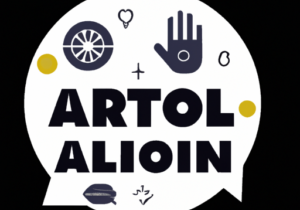How to Master Cold Calling
In today's rapidly evolving B2B market, the dynamic concept of trust has emerged as a pivotal determinant of successful sales engagements. As the sales landscape continues to evolve, it's evident that trust dynamics have shifted significantly. With buyers exercising greater caution and proactively seeking information, they are now more informed than ever before, often conducting extensive research before even engaging with sales representatives. This transformation has led to a noteworthy decline in trust levels between buyers and sellers, necessitating a swift adaptation by sales professionals and a quest for innovative strategies to navigate this changing landscape effectively.
Why You Need to Gain Trust when Cold Calling
In the intricate landscape of the B2B market, the nature of the buyer significantly diverges from that of a B2C market. Here, the B2B customer is tasked with a profound responsibility, as every purchase decision carries the weight of their professional reputation and career advancement. Moreover, in this realm, the concept of sacrifice extends beyond the investment of time and resources; it encompasses the broader spectrum of complex buying committees that are larger and more intricate than ever before, making the purchasing process considerably more convoluted.
The intricacies of B2B purchases transcend the individual, as the ramifications of a suboptimal decision ripple through organizations, affecting a multitude of stakeholders and potentially jeopardizing substantial financial investments. In this context, the customer's role is pivotal, as the magnitude of the decision-making process underscores the vast number of people involved and the substantial financial risks at stake, distinguishing it starkly from the B2C landscape. It is within this framework that the imperative for trust and confidence in B2B sales becomes even more pronounced, emphasizing the necessity of building robust relationships and delivering value that aligns with the multifaceted concerns and challenges of the modern B2B customer.
In response to the prevailing deficit of trust in the B2B landscape, a substantial number of buyers often default to the "no decision" route, hesitating to progress with a purchase due to an inherent lack of trust in the seller's capabilities and intentions. Drawing a compelling parallel, Chris Beall, CEO of ConnectAndSell, underscores that the trust a B2B buyer bestows upon a seller is akin to the trust individuals place in a surgeon before undergoing a medical procedure, reinforcing the critical imperative of instilling trust by showcasing expertise in the product and a deep understanding of the prospect's unique needs and challenges.
Trust is at an All-Time Low
B2B customers now conduct extensive research before engaging with salespeople. A study by TrustRadius done in 2022 surveyed 2,185 tech buyers and found that almost 100% of buyers prefer self-service for part or all of their buying journey. These changes don't mean customers won't take advantage of or interact with a salesperson. Still, you need to ensure that your technology, content, and website offer a seamless, up-to-date, and informative experience for customers to navigate.
Alex Weitzel, Marketing Manager at Omedym, highlighted a striking projection for the near future, indicating that by 2024, approximately half of the workforce will be comprised of millennials. This demographic shift carries substantial implications for sales interactions, as millennials exhibit a notably heightened skepticism toward sales representatives and a strong inclination to independently gather information. Consequently, in this evolving landscape, when prospects do engage in sales conversations, they harbor heightened expectations, demanding that their sales representative possess in-depth expertise about the product or service and be adept at promptly and effortlessly providing the answers and solutions they seek. This transformation in the sales dynamic underscores the imperative for sales professionals to adapt and align with these evolving expectations, emphasizing the need for product knowledge, agility, and responsiveness as central tenets of their approach.
Gain Trust Quickly
The process of cultivating trust with prospective customers has undergone a substantial transformation, necessitating a reevaluation of how initial encounters are approached. In the contemporary landscape, the imperative to instill trust at the outset has assumed paramount importance, as this initial interaction presents a pivotal opportunity to lay the foundations for enduring, trust-based relationships. Furthermore, shifting trends in research behaviors among potential clients offer unique openings for the efficacy of cold calls, provided that they are thoughtfully executed with a personalized and precisely targeted message that conveys authentic value to the recipient. These strategic adaptations enable sales professionals to navigate the evolving B2B market dynamics and enhance the effectiveness of their interactions with prospects.
During a presentation at the 2023 Demand Gen Summit, Chris discussed a meeting he encountered with Christopher Voss author of Never Split the Difference: Negotiating As If Your Life Depends On It, where he said that in a cold call, you have 7 seconds to gain someone's trust. In the initial interaction prospects are evaluating whether they can trust the business or salesperson, if trust is not gained quickly the customer can become skeptical and even dismissive of further engagement. It is important to acknowledge possible down-funnel problems in the first interaction for early qualification and to allow the salesperson to tailor their solution to the prospects pain points.
How to Start the Process
Chris said, “The standard way of talking to a prospect, sending an email first and reaching out second, is likely not to work,” there is an idea that CEOs and higher-ups in a company get a multitude of phone calls throughout the day, which Chris said is a misconception. An email is more likely to be disregarded and is more likely to come across as awkward, scripted, or even creepy when it is received before a conversation is had face to face or over the phone.
Dispelling prevailing assumptions, it's important to recognize that well-executed cold calls, often seen as a form of "ambushing" a potential client, can indeed prove effective in establishing trust when underpinned by meticulous preparation and honed skills. The effectiveness of such an approach hinges on the acquisition and application of the right skill set, which, in turn, stems from rigorous training, the development of a practiced script, and a deep-seated belief in the product or service being offered. By acknowledging these nuanced dynamics, sales professionals can leverage cold calls as a potent tool for trust-building within the ever-evolving B2B landscape.
Sincerity in the Script
It is essential to have a script prepared before your cold call so you can optimize the short amount of time allotted to gain the prospect's trust. Practice and coaching are necessary to modify and maximize the effectiveness of the script. You need to establish a solid underlying belief in the value of your product, which in a cold call is a discovery meeting or opportunity to discover if your solution is a good fit for them. You are selling the value of your product, the belief that your prospect will benefit from the meeting even if they never buy into you and your company. This belief is important because it will allow you to come across as sincere with your prepared script.
“That belief in the value of that meeting for that human being you're speaking with, even if you're never going to do any business with them, that belief is the key to getting the sincerity in your voice to go along with anything that is scripted. So, the scripts got to be practiced with coaching to the point where it’s natural, and it has got to be supported by an underlying belief that allows you to be sincere in your voice,” said Chris.
Tactical Empathy
Tactical empathy, as conceptualized by Christopher Voss, serves as a powerful technique for swiftly engendering trust, providing the other party with a palpable sense that their perspective is genuinely understood, and effectively conveying one's competence in addressing their prevailing challenges. This multifaceted approach encompasses active listening and an adept display of comprehension of the counterpart's stance, often employing tactics such as "mirroring," where the repetition of select words or phrases underscores the attentive nature of the exchange. Furthermore, the essence of tactical empathy lies in the exploration of the prospect's concealed needs beneath their overt requirements, aligning with findings from the RAIN Group Center for Sales Research, which revealed that a remarkable 92% of buyers express an inclination to make a purchase from sellers who are capable of "deepening their understanding of needs." This underscores the critical role of tactical empathy in not only grasping but also enhancing the customer's perceived needs, fostering a profound sense of customer-centric engagement.
In the realm of sales, tactical empathy assumes an indispensable role in evoking the sentiment among customers that their needs are not only comprehended but also magnified in depth, thereby establishing a profound connection. By seamlessly penetrating the veneer of apparent needs and delving into the subtler layers of prospect requirements, sales professionals can distinguish themselves as trusted advisors who are genuinely committed to enhancing the customer's understanding of their own needs. This transformative approach to understanding the customer's psyche not only solidifies trust but also lays the groundwork for enduring relationships built on an unwavering commitment to meeting and exceeding the customer's expectations. In the contemporary B2B landscape, where trust is at a premium and skepticism looms large, the deployment of tactical empathy represents a pivotal competitive advantage, enabling sales professionals to navigate the intricacies of customer needs with precision and finesse.
Solving the Customer's Problem
In the context of a cold call, the central challenge lies in the seller's ability to capture and retain the customer's valuable time and undivided attention. While it may initially appear counterintuitive to label yourself, the seller, as the problem, Chris highlighted a profound insight that stems from this recognition: being the problem equips you with the unique capacity to be the solution. By acknowledging that you, as the sales professional, have the power to alleviate the prospect's concern of time and attention diversion, you can proactively address this issue. By proffering the option to disengage after the prospect has had the opportunity to listen to your value proposition, you effectively present a solution to the core challenge, empowering you to navigate cold calls with greater effectiveness and consideration for the prospect's perspective.
Taking accountability for being an inconvenience before the potential customer does, it can display your authenticity and understanding of their position which can help you to earn their trust quickly. Once trust has started to build you can nurture a long-term relationship, it can also open opportunities to connect with other professionals in the B2B market through referrals. A B2B market consists of people who have a need for your offer, if one person buys from you, it demonstrates to other potential clients that your product doesn’t come with as much risk as others might. The more you sell, the more potential leads you will get from referrals.
After the Conversation
Chris advised that after having a conversation with a potential buyer you should send them an email thanking them for their conversation. You are more likely to get a response than if you were to reach out to them with an email first because they already trust you and the relationship building process has already begun. The optimum order to connect with your prospect is to engage in a conversation first and reach out over email second. Your thank you email will be naturally personalized because you have already had a conversation beforehand and begun the process of building a long-term relationship.
Now that you’ve initiated the relationship, and the client has granted you with their confidence, you have started what will ideally become a long-term relationship. According to the RAIN Group study, 71% of buyers want to talk to sellers when they’re looking for new ideas and possibilities to drive stronger business results. Chris said in his presentation that 11 out of 12 times your prospect is in the market in the future, or about a year or so in advance. Most of your prospects are looking to build a trusting relationship with a salesperson who can help them understand their needs more and who is willing to invest in the relationship before they commit to a purchase.
Conclusion
In response to the evolving dynamics of the B2B marketplace, where heightened skepticism prevails, the endeavor of securing trust from potential customers has assumed a heightened significance, accompanied by a notable transformation in the underlying process. In the context of cold calls, sales professionals must adopt a strategic realignment, emphasizing the demonstration of expertise, a keen understanding of customer needs, and the judicious application of tactical empathy as pivotal elements in their engagement. The deployment of these strategies serves not only to facilitate the initial rapport but also to lay the foundation for enduring relationships between buyers and sellers, echoing the broader paradigm shift towards trust-centric engagements in the contemporary, distrust-laden industry. Within this context, the capacity to effectively gain and sustain a prospect's trust stands as the pivotal differentiating factor that can shape success and competitiveness within the dynamic sphere of B2B commerce.
READ MORE
Start seeing your Buyers' signals
Signals is helping companies automate, grow, and close sales pipeline with industry-leading predictive intent scoring, lead generation, and real-time engagement.



















